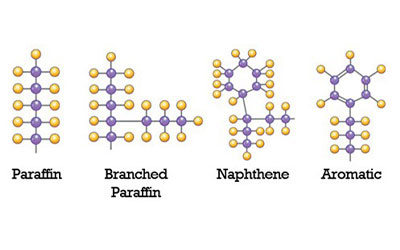
Plastisizer – An additive to the polymer that increases the fluidity of the material to which it is added. It is often used as a softener for rubbers and resins to increase flexibility of the polymer. This increases the capacity for a ribbon to be stretched out on the waterbath.
Resin – A hydrocarbon secretion of plants, particularly coniferous plants. Thick and highly viscous, resins, particularly synthetic resins, are developed to give strength and a hardening quality to a polymer. These tend to have a very sticky characteristic when embedding. In microtomy it enhances ribboning strength.
Elastomer – A polymer consisting of elements such oxygen and silicon, in addition to carbon and hydrogen. This is consistent with rubbers and have a characteristic of being able to resume its natural state after stretching and other forms of distortion from its natural state.
Polymer – A technical definition has already been presented. The most visual enhancement of polymers in histological waxes is their ability to link section after section to form a continuous ribbon, and to achieve thinner sectioning as low as 2-3 microns.
Microcrystalline Wax – A higher molecular weight wax than most histology paraffin waxes. This prevents crystalline formations in the wax resulting in cracking. A harder, more flexible wax, MCL waxes have a higher melting point making them more ideal for specific research applications requiring higher tissue processing temperatures.
As previously mentioned, there is considerable overlap in the definition and characteristics of the four additives presented. Many of them on the surface seem to have the same qualities of flexibility, stretchability, ribboning strength, etc. However, subtle differences in performance are what significantly distinguishes one wax blend of additives from another. While our commercial vendors do a great service in providing general information on wax products, it behooves the Histology professional to know and understand the specific definitions used in polymers and additives; and through their own research and hands-on experience with each product, determine what wax blend works best for their application and personal technique.
Reference
- Brown, S., “The Art & Science of Histotechnology”, Lab Management Consultants, 2011.
- Brown, S., “The Basic Dynamics of Fixation & Processing”, Lab Management Consultants, 2008.
- Brown, S., “The Wax Museum”, Workshop Symposium-National Society for Histotechnology, Lab Management Consultants, 2008.
- www.poth-hille.co.uk, Microcrystalline Wax | Poth Hille (poth-hille.co.uk)
- Visser, G., “Waxes Used In Hot Melt Adhesives”, Sasol Wax Americas, Inc., 2007.
- Wright, J., “The Fundamentals of Mineral Base Oil Refining”, Noria Corporation, 2012.

